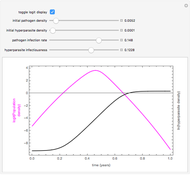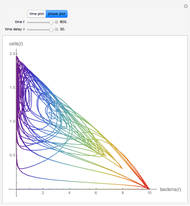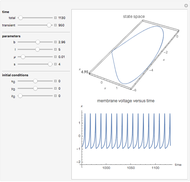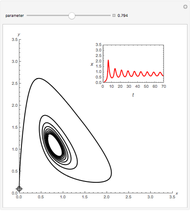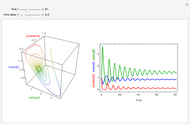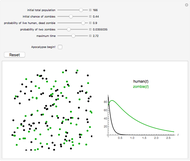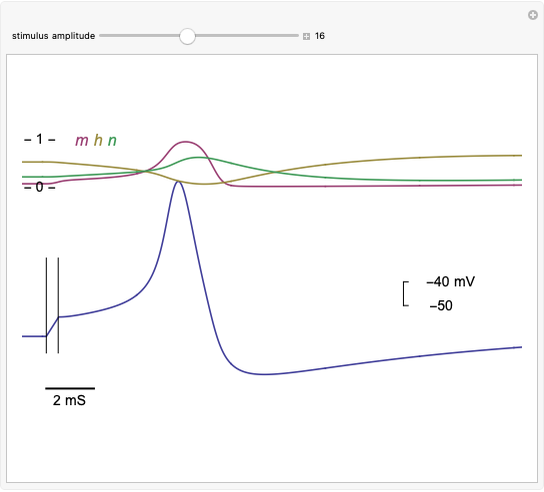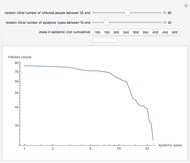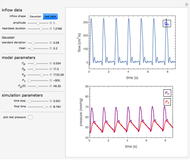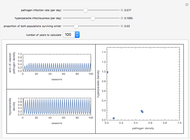Chaos in a Plant Pathogen/Hyperparasite Population Model

Requires a Wolfram Notebook System
Interact on desktop, mobile and cloud with the free Wolfram Player or other Wolfram Language products.
This Demonstration shows successive end-of-season populations of a plant pathogen population increasing in conditions that become progressively unfavorable during the season, and which is limited by the plant population available. A hyperparasite population increases on the pathogen faster if there is more pathogen present. Annually BOTH populations are reduced to a fraction  of themselves by the off-season, when the host plant is absent and the weather is unfavorable.
of themselves by the off-season, when the host plant is absent and the weather is unfavorable.
Contributed by: Michael Shaw (June 2012)
Open content licensed under CC BY-NC-SA
Snapshots
Details
Within a season, the plant pathogen increases at a per capita rate that is reduced in proportion to the population size and decreases during the season as conditions become progressively unfavorable. It is destroyed by a hyperparasite at a rate that is proportional to both populations. The parasite harms the host but has no in-season death rate. This models something with long-lived structures but only one food source. If the pathogen population as a proportion of its maximum is  , and the population of the hyperparasite is
, and the population of the hyperparasite is  , where both are functions of time
, where both are functions of time  running from 0 to 1 within season
running from 0 to 1 within season  , the equations are
, the equations are
 ,
,
 ,
,
 ,
,  .
.
Between seasons, both populations are reduced to a small fraction of their end-of-season sizes:
 ,
,
 .
.
References
[1] M. W. Shaw, "The Population Dynamical Consequences of Density-Dependence in Fungal Plant Pathogens," in Stress in Yeast and Filamentous Fungi (S. A. Avery, M. Stratford, and P. van West, eds.), British Mycological Society Symposia Series, 27, Dordrecht: Kluwer, 2008 pp. 53–66.
M. W. Shaw, "Seasonally Induced Chaotic Dynamics and Their Implications in Models of Plant Disease," Plant Pathology 43(5), 1994 pp. 790–801.
Permanent Citation









